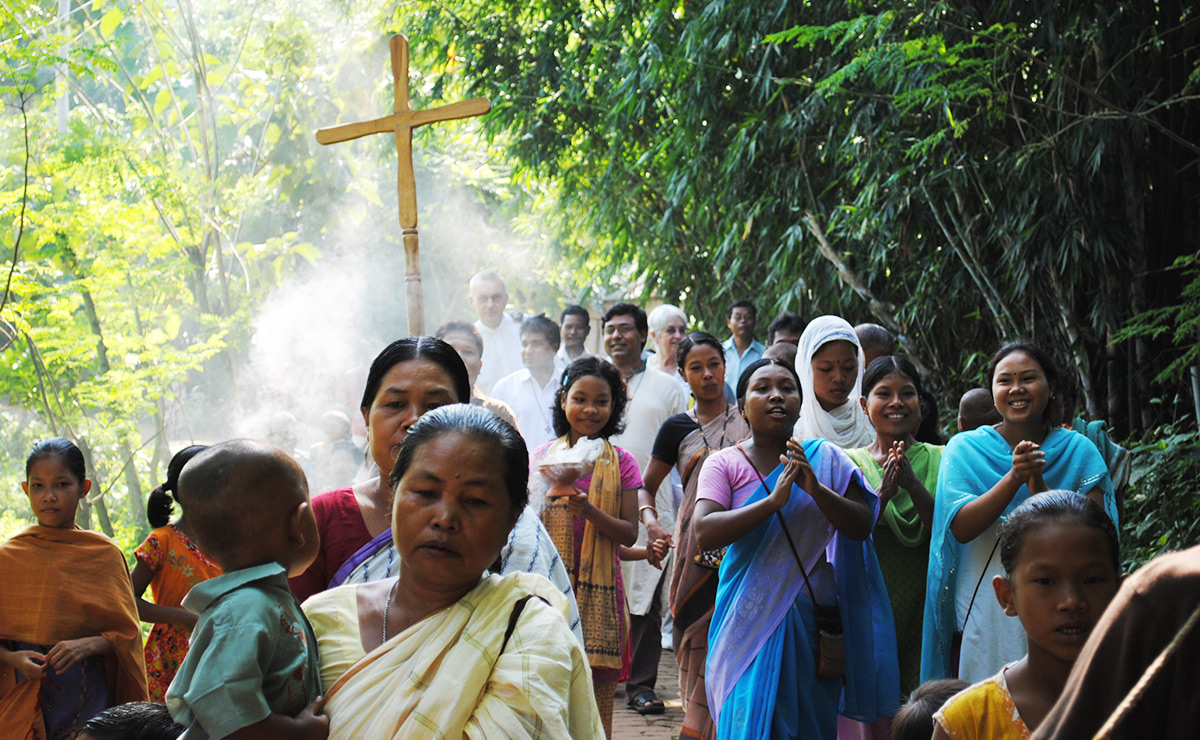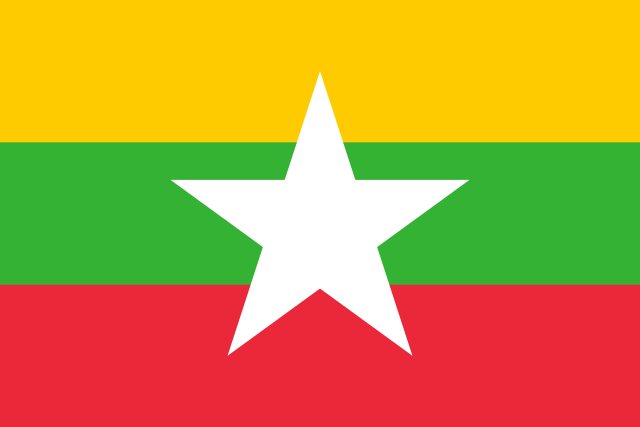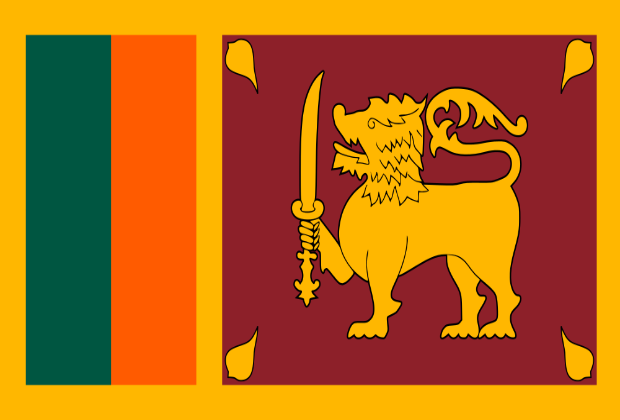Asia

Many of our partners in Asia are living as minority Christians in challenging situations. However, they display a wealth of cultural diversity and a common desire to proclaim the Christian Gospel and support their communities.
The Church of Scotland has partners in Bangladesh, Myanmar, China, India, Indonesia, Nepal, Pakistan, Singapore, South Korea, Sri Lanka, Taiwan, and Thailand.
Bangladesh

Partner Church
Partnership History
- The Church of Bangladesh originated in the work of missionaries operating out of British India
- The first Protestant church was built at Dinajpur in the north-west in 1796
- After 1952 Dhaka became a Diocese of the Church of North India, Pakistan, Myanmar and Ceylon
- The Civil War in 1971, between East and West Pakistan, led to the east becoming independent as Bangladesh. With the creation of a new country, a relationship with Pakistan was no longer possible and the Church of Bangladesh was created in 1974
- In 1974 the Diocese of Dhaka became independent as the Church of Bangladesh, which became ecumenical when Presbyterians joined the Church
- The Church of Bangladesh comprises more than 18,000 members, across 71 parishes
Twinnings and Projects
- Congregational and presbytery twinnings between Scotland and Bangladesh as well as a Mission Partner appointed by the ecumenical Church of Bangladesh Group
- Support for theological education
China

Partners
- Amity Foundation
- China Christian Council
Partnership History
- While the Jesuits had been present in China from the 13th century, Protestant missions to China began in earnest following the Opium Wars of the 19th century
- Prior to 1952 the Church of Scotland had two mission bases – one of the Yangzi River at Yichang, and another in the city of Shenyang (a united mission with the Presbyterian Church of Ireland and the Danish Lutheran Church)
- Despite civil war and anti-foreign (and anti-Christian) uprisings such as the Boxer Rebellion (1898-1901), there were Christian missionaries present in most regions of China
- In 1940, there were 94 Church of Scotland missionaries sharing the gospel and their love for the people of China
- Following the Communist victory of 1949, the churches, seen as agents of western imperialism, were brought under government control
- Chinese churches were encouraged to break their ties with churches abroad and to become self-governing, self-supporting, and self-evangelising (the "three-self" patriotic principle) and most missionaries left or were expelled
- During the early 1950s around 40 per cent of all Chinese Protestants signed up to the manifesto of the Three-Self Patriotic Movement (TSPM), which became the umbrella body for all Protestant Christian churches
- During the Cultural Revolution (1966-1976) all public religious activity came to an end, churches were closed, and many Christians were either imprisoned or sent into internal exile to labour in the countryside
- Following Mao Zedong's death in 1976, churches were slowly allowed to open and public worship tentatively resumed. Seminaries reopened and the printing of bibles recommenced.
- The government retained oversight and control of all church activity through its Religious Affairs Bureau (RAB), which has a presence at every level of government administration
- In 1980 the China Christian Council was formed with the aim to unite all Chinese Christians and to run the church under the guidance of the Holy Spirit and in obedience to Scripture and Chinese church order and the national constitution, laws, regulations and policies. Today it is estimated there are between 93 million and 115 million Protestants in China, with about 30 million attending CCC/TSPM churches
- In 1985 the Amity Foundation was founded as a social service with Christian motivation: in thirty years it has grown into a powerful witness to the compassion and commitment of the followers of Jesus. Amity Foundation's mission statement says, "Through the promotion of holistic development and public welfare, Amity serves society, benefits the people, and contributes to world peace."
- Today, Amity has over 200 staff involved in range of development, education, health, environment and social activities. It contributes to China's social development, raises awareness of Christian involvement in meeting the needs of society, and serves as a channel for people-to-people contact and ecumenical work. Amity Printing Company was founded in 1987 and to moved to state-of-art premises in Nanjing in 2009. It is now United Bible Societies' largest Bible printing press and had has produced some 170 million Bibles by the end of 2017. It prints some 25 million Bibles a year, half for China with the rest being sent to Bible Societies all over the world.
Twinnings and Projects
- Scholarship
- Financial support for Amity Foundation including HIV and health projects, development projects
- Church of Scotland is a member of Scottish Churches China Group and Churches Together in Britain and Ireland China Forum
India

Partner Churches
Partnership History
- Scottish involvement in the spread of Christianity in India was considerable in British India
- Work began at Mumbai (then Bombay) and Pune (then Poona) in 1823, under the auspices of the Scottish Missionary Society
- Subsequently different factions of the Scottish Church founded stations in Bengal (1829), Chennai (1835), Nagpur (1845), the Punjab (1857), Rajputana (1860), Santalia (1869), Eastern Himalaya (1870) and Seoni (1872)
- CNI came into being in 1970 as a result of the merger of the Anglican, Presbyterian, Congregationalist, Baptist, Methodist, the Church of Brethren in India and the Disciples of Christ denominations in Northern India
- Today it has around 1.25 million members in over 3,000 parishes
- CSI was inaugurated in St George's Cathedral, Chennai in 1947
- It was the first time that Episcopal and non-episcopal traditions successfully combined
- Today the Church has a membership of around 3.8 million and is the largest Protestant church in India
Twinnings and Projects
- Congregational and presbytery twinnings
- HIV and AIDS projects including Community Based Care and Support Project at Namakkal in CSI Diocese of Coimbatore
- Scholarships for Christian students
- Interfaith peace building work in CNI Diocese of Amritsar
- Support for Ministry to the Last, the Least and the Lost, a programme to help poor and vulnerable girls from Dalit and Tribal communities be trained as nurses
- WMC supports National Council of Churches in India's advocacy work on people with disabilities and India Peace Centre's work
Indonesia

Partner Churches
- Gereja Kristen Sumba (GKS)
Partnership History
- GKS grew out of the missionary work of the former Reformed Churches in the Netherlands (now Protestant Church in the Netherlands) which began in 1881. The church became autonomous in 1947. The GKS is organized according to the Presbyterian-Synodal tradition with a synod as the supreme governing body, meeting every four years, and councils of elders in the local congregations
- In February 2014 GKS contacted WMC enquiring about cooperating and developing a partnership. This was formally agreed in 2015.
- Sumba is an island in eastern Indonesia in the province of East Nusa Tenggara. Sumba has an area of 11,153 km2 (Scotland is seven times bigger) and the population was 656,259 at the 2010 Census. It is one of the poorest islands in Indonesia but government investment has brought recent improvements in infrastructure.
- GKS has 32 presbyteries (called "Classes") and 150 congregations across the island's four regions. Some congregations have up to 28 stations with 10,000 members although a process is being implemented to create more congregations with more manageable sizes. There are 426,000 members (65% of Sumba's population) and the church is growing through evangelism and conversion
- The vast majority of the church's ministries are in remote and isolated areas across difficult terrain. This poses particular challenges (e.g., travel, accommodation) for the growing number of women ministers
- GKS has accepted women's ordination since the 1980s and the majority of new recruits to the ministry are women. This seen as promoting church growth and also transforming the church as women do not enjoy high status in Sumbanese society.
- HIV, drug and alcohol abuse are issues often associated with women returning from working abroad. GKS has a Women's Crisis centre as a response to the high incidence of domestic violence.
Twinnings and Projects
- We support various training and capacity building programmes, including in-service training for clergy and lay training
Myanmar

Partner Churches
- Presbyterian Church of Myanmar
Partnership History
- The Presbyterian Church of Myanmar (PCM) is concentrated in the Chin Hills and on the lowlands close to the border with India
- There are now almost 30,000 members in 224 congregations. There are 20 presbyteries in nine synods that reflect the territorial and linguistic diversity of the membership
- The church grew out of revival in 1930s among Lushai Presbyterians in north-east India and their migration from Assam, particularly after World War II and the union of two indigenous Mizo mission groups, one in the Chin Hills, the other in the valley, in 1956
Twinnings and Projects
- Support for women's leadership training and capacity building
- Support for development projects at Tahan Theological College, run by PCM but training ministers and church workers from over a dozen denominations
- WMC supports the salary of the Women's Secretary
Nepal

Partner Churches
Partnership History
- Church of Scotland involvement in Nepal began in 1870 when a mission station was founded in Kalimpong, in the frontier territory between India, Nepal, Tibet and Bhutan
- Although missionaries were barred from Nepal, Nepalese converts from Kalimpong and Darjeeling returned to the country to spread Christianity
- Nepal opened its borders to foreign influence, including missionaries in 1951
- Church of Scotland was one of the founders of the inter-denominational United Mission to Nepal in 1954
- There were only about 1,000 Christians in Nepal in the 1950s. Since the mid-1990s there has been spectacular church growth. There are now thought to be between 1 and 2 million Christians in Nepal, making it one of the fastest growing churches in the world.
Twinnings and Projects
- Supporting Mission Partners in Nepal
- Nepal Ebenezer Bible College
- UMN health and development programmes
- Nation Christian Federation of Nepal
Photos: Flickr account
Pakistan

Partner Churches
- The Church of Pakistan (COP)
Partnership History
- Following the partition of British India in 1947, the Protestant denominations in Pakistan began negotiations to form a national Protestant Church
- The Church of Scotland had begun mission work in Sialkot in 1857 and less than 50 years later the Church of Punjab Mission joined with other Presbyterian churches in an early display of church unity to create Presbyterian Union that included American Presbyterians in the new Synod of Punjab. These moves continued and in 1953 Sialkot Church Council was established to be a more locally run church
- On All Saints Day in 1970 the COP came into being as an ecumenical organisation representing Anglicans, Congregationalists, Lutherans, Methodists and Presbyterians
- Today the Church has over 500,000 members in 460 parishes in eight dioceses covering the whole country
- COP is an ecumenical denomination and the largest protestant denomination in Pakistan
- Community World Service Asia – Pakistan/Afghanistan
- Centre for Legal Aid, Assistance, and Settlement (CLAAS).
Twinnings and Projects
- Support Church of Pakistan projects and programmes in different dioceses including, training, girls' education, women's work, HIV awareness and medical work
- Support for CLAAS work with care and support of victims of the Blasphemy Law, rape, and forced conversion in Pakistan and the advocacy campaign to end misuse of the Blasphemy Law. A video has been produced by CLAAS as part of the campaign to end the misuse of the blasphemy law in Pakistan. Watch it here.
Photos: Flickr account
South Korea

Partner Churches
- The Presbyterian Church of Korea (PCK)
- The Presbyterian Church of the Republic of Korea (PROK)
Partnership History
- Presbyterian involvement in Korea came through the work of PCUSA missionaries, who expanded from their work in Manchuria into Korea in the 1880s
- The Korean War between 1950 and 1953 caused enormous suffering, and the ongoing division of the country is a source of tension
- Today the PCK is the largest Presbyterian church in Korea, with around 2.5 million members
- John Ross (1842-1915) was born in Balintore, Easter Ross and, under the auspices of the United Presbyterian Church, he travelled to China in 1872. Ross, a Gaelic speaker and gifted linguist with knowledge of 11 languages, is fondly remembered by the Korean Christian community for translating the New Testament into Korean. The first general assembly of the Presbyterian Church in Korea took place in Pyongyang in September 1912. Despite turbulence within Korean society, the growth of the Presbyterian Church of Korea over the coming years was remarkable. By 1919, the church had 192 pastors—up from 40 in 1910—and a membership of over 60,000.
Twinnings and Projects
- Working with PCK, PROK, NCCK and World Council of Churches and CTBI Korea Group to raise awareness of issues affecting the Korean peninsula
- Support for National Council of Churches in Korea Peace Treaty campaign
Photos: Flickr account
Sri Lanka

Partner Churches
- Presbytery of Lanka
- National Christian Council of Sri Lanka (NCCSL)
Partnership History
- The Presbytery of Lanka traces its origins back to the work of the Dutch Reformed Church, beginning in 1642
- Under Dutch rule Presbyterian numbers reached 400,000
- After a brief interlude following the shift from Dutch to British rule in the late 18th century, Church of Scotland mission work began on the island in 1830
- In 1882 Presbyterians from the Dutch and Scottish traditions united to form the Presbytery of Lanka
- Today, the Presbytery is very much a minority denomination, with numbers dropping below 10,000 as a result of migration and a reversion to Catholicism and other faiths
- Sri Lanka is also home to one of the Presbytery of International Charges congregations, St Andrew's Colombo
Twinnings and Projects
- There are congregational twinnings between Scotland and Sri Lanka
- HIV Projects: Women's Development Centre focuses on female empowerment in high-risk groups e.g. young people, sex workers, migrant workers and displaced peoples
- Presbytery of Lanka
- Working with NCCSL and international ecumenical partners on peace building and reconciliation projects
Photos: Flickr account
Taiwan

Partner Churches
- The Presbytery Church in Taiwan (PCT)
Partnership History
- Presbyterianism first arrived in Taiwan as a result of the Dutch colonisation of the island in the 17th century
- PCT traces its roots back to mission work that began in the year 1865 in Tainan with the arrival of Dr. James L. Maxwell sent by the Presbyterian Church of England
- Little modern development was initiated by the government in Taiwan, until the Japanese takeover in 1895
- Many modern institutions were already introduced by the church e.g the first school, including the first school for girls, the blind and deaf, the first western hospital, the care for leprosy patients, and the first printing press in Taiwan were all established by the Presbyterian Church
- All foreign missionaries were expelled for a period from 1930, giving the church an early experience of autonomy
- Evangelism among the indigenous tribes started at this time despite ruthless Japanese opposition and by the end of the war 4,000-5,000 indigenous people were ready for baptism
- Member of Taiwan Ecumenical Forum
Twinnings and Projects
- Exchange visits by Guild, Moderators of the two churches General Assemblies and Church of Scotland Youth
- Support for theological education through assisting with faculty development
Photos: Flickr account
Thailand

Partner Churches
- The Church of Christ in Thailand (CCT)
Partnership History
- Presbyterianism first arrived in Thailand in 1838 as a result of the work of American missionaries
- CCT was founded in 1934 as the Church in Siam with the intent of forming a single ecumenical denomination to include all Protestant churches in Thailand
- Except for a brief period during World War II, Presbyterian missionary influence remained predominant in the CCT until the late-1970s
- Since 1990, the denomination has experienced a major demographic shift. Tribal churches, mostly Baptist in origin, now account for about half of its total number of around 130,000 communicant members
- CCT consists of Thai, Chinese, Karen, and English-speaking congregations
Twinnings and Projects
- HIV Project– Sangklauri Pakh 16 Community Project
- Baan Sabay Shelter for People Living With HIV
Photos: Flickr account